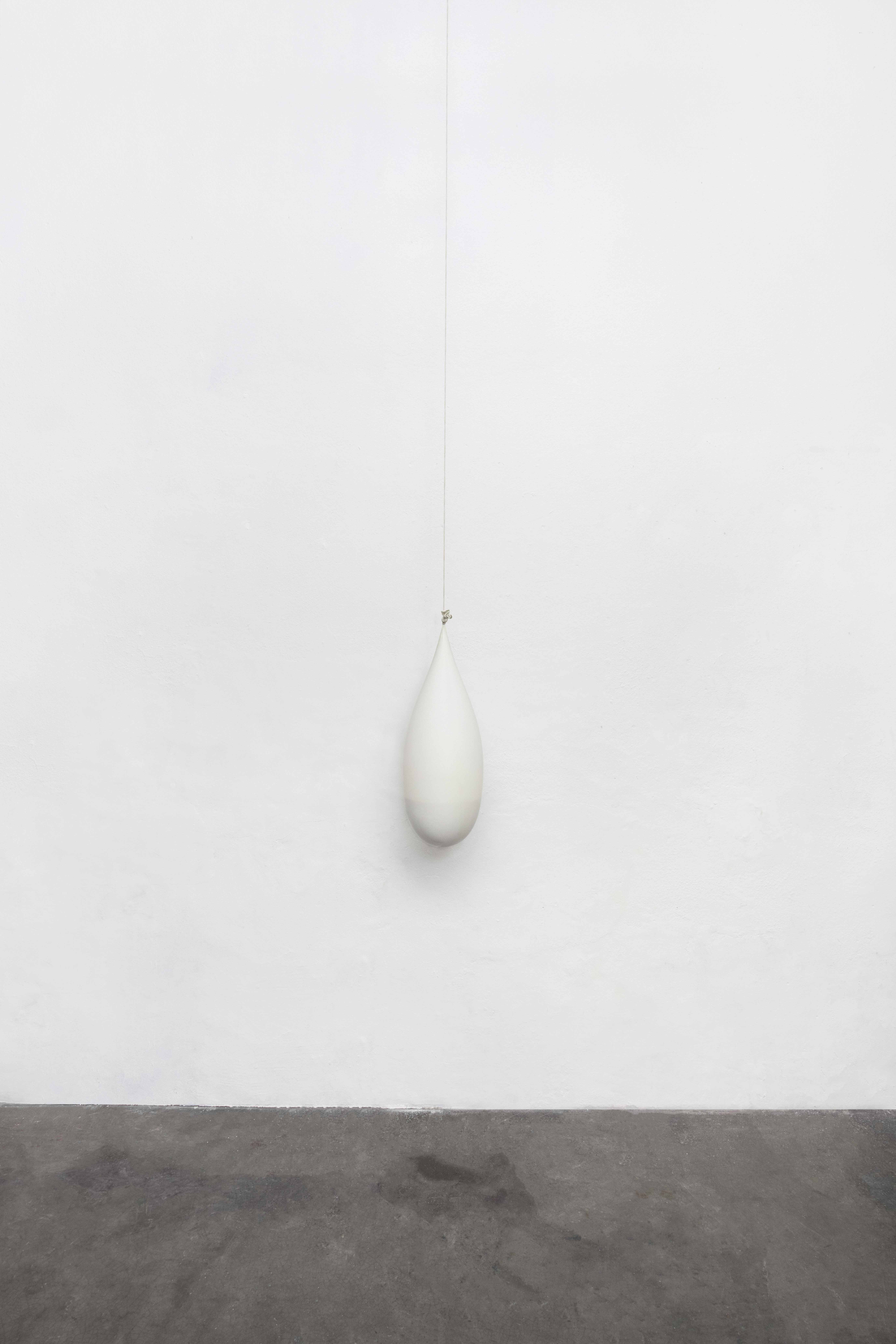Uma bexiga de leite ou mãe [A milk bladder or mother] a work of air, milk and a balloon. These three common elements found in everyday life acquire a new meaning when placed into a confined space with one another.
The work is conceived with the concept of nourishment in mind: "how can a space be artificially created to feed new life?"; while individually these everyday objects bear no resemblance to sexual organs or the process of reproduction - once they are combined, we are naturally inclined to observe a likeness to sexual elements. As the artist begins to fill the balloon with air and milk simultaneously, a weight and gravity is created within the balloon that is usually observed to be light and empty. A natural reaction occurs between these elements.
The bladder immediately rejects the milk. It's a struggle between two elements trying to enter this confined space. The impermanence of "A milk bladder or mother" points us to the deterioration and change over time of this once white and seemingly pure substance. It initially only shows us a thin line that divides the milk and the air inside the balloon, as days go by, the work begins to drain the milk and attracts insects that feed from it.
When looking at the work we are forced to confront a kind of imperative process of motherhood. Somehow the objects begin to appear aware of the process central to the work, being the recipients of new life and the unconscious, almost autonomous process of creating it.
![]()
The work is conceived with the concept of nourishment in mind: "how can a space be artificially created to feed new life?"; while individually these everyday objects bear no resemblance to sexual organs or the process of reproduction - once they are combined, we are naturally inclined to observe a likeness to sexual elements. As the artist begins to fill the balloon with air and milk simultaneously, a weight and gravity is created within the balloon that is usually observed to be light and empty. A natural reaction occurs between these elements.
The bladder immediately rejects the milk. It's a struggle between two elements trying to enter this confined space. The impermanence of "A milk bladder or mother" points us to the deterioration and change over time of this once white and seemingly pure substance. It initially only shows us a thin line that divides the milk and the air inside the balloon, as days go by, the work begins to drain the milk and attracts insects that feed from it.
When looking at the work we are forced to confront a kind of imperative process of motherhood. Somehow the objects begin to appear aware of the process central to the work, being the recipients of new life and the unconscious, almost autonomous process of creating it.


Uma bexiga de leite ou mãe [A milk bladder or mother], 2018
balloon, milk and air
variable dimensions





